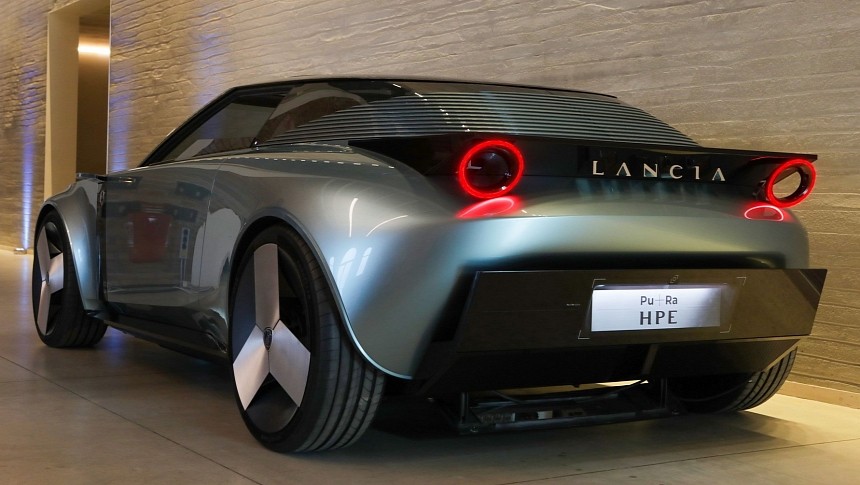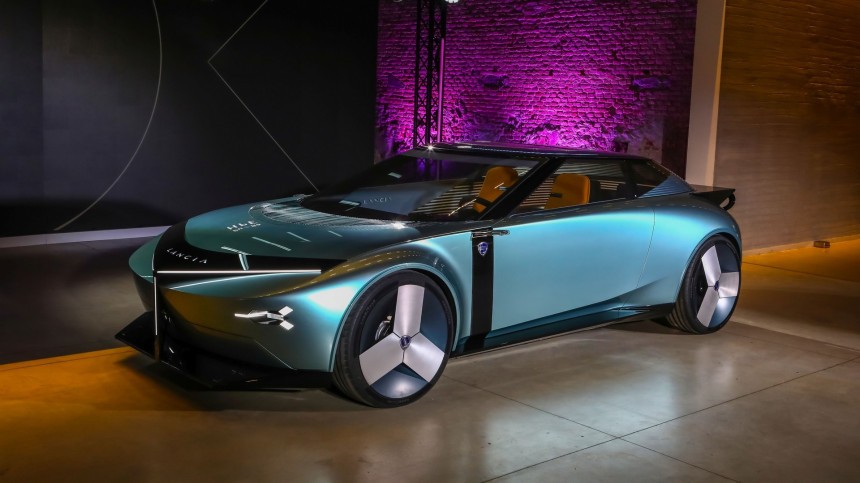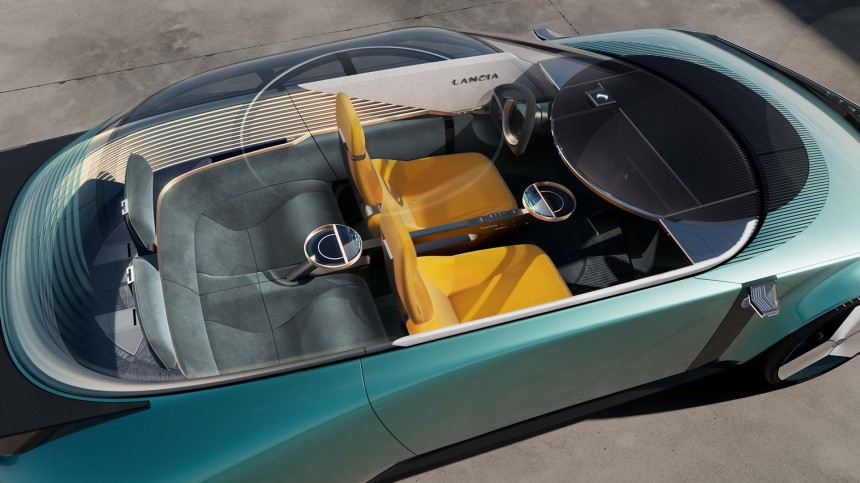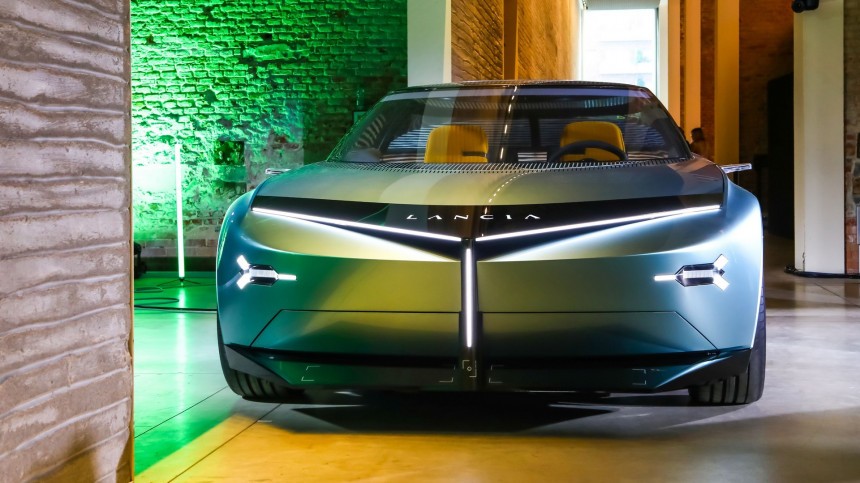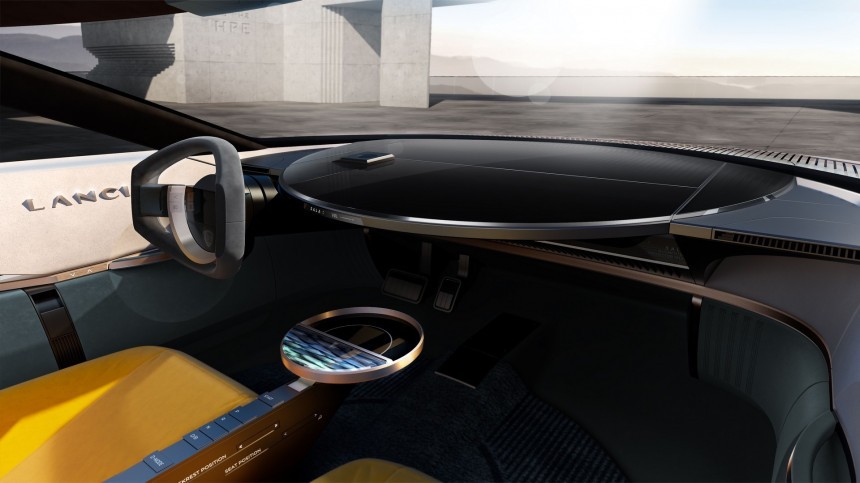Lancia once stood for groundbreaking technology. The 1922 Lancia Lambda was the first production car to present a unibody, which is the automotive industry's current standard. The Series 3 Ardea was the first car with a 5-speed manual gearbox in 1948, while the 1950 Aurelia introduced the V6 engine to the world. The car that was supposed to reintroduce Lancia to the world did not stand for any of that. It did not even mention its obvious inspiration in the Stratos. The Pu+Ra HPE concept has more to do with furniture.
Believe it or not, that was what Stellantis chose to reinforce when it officially presented the electric car on April 15. According to the automaker, Pu+Ra stands for pure and radical, while the HPE acronym translates as "high-performance electric." This is not the first time Lancia has used it. The difference is that it stood for "high-performance estate" in the 1970s, with the Beta. No problem with recycling the acronym, but Stellantis could have elaborated on what it meant by high performance. Unfortunately, it didn't.
All the automaker said about the concept car is that it has more than 700 kilometers (435 miles) of range, charges in "just over 10 minutes," and has an energy consumption of 10 kWh per 100 km (6.21 miles/kWh). It also said Goodyear designed its tires for the "custom sidewalls" to have "a perfect fit on the wheel, which adds a premium look to the vehicle" and provide "the highest aerodynamic performance level, enhancing energy efficiency." There is no word about how the vehicle achieves all that. A new battery tech? Which one? The automaker did not talk about it.
Stellantis also ignored Lancia's glorious past in rallies. It didn't even mention that the Pu+Ra HPE was inspired by the Lancia Stratos, which is pretty evident. One of the main differences between them is that the concept car seats four people. Being electric released the space in the back that was reserved for the Dino 2.4-liter V6 engine that powered the rear wheels of the original two-seater. According to the automaker, the Pu+Ra HPE "is the first car inspired by the world of Italian furniture design, thanks to the collaboration with Cassina." You are not alone if you have no idea what the Italian company is. Cassina makes fancy furniture.
So there you have it: the new concept was supposed to look like a table, a chair, a sofa, not like the Stratos. Stellantis failed the mission. When did a partnership with a famous high-end furniture brand become more important than defending the very elements that once made Lancia unique?
The automaker said that the concept car is a "manifesto in terms of design, interior 'home feeling,' sustainability, electrification, and effortless technology." What do these concepts have to do with a Lancia Stratos, a cramped, uncomfortable car that had the single purpose of crossing a leg in the least time possible? As obvious as that may sound, it is worth reinforcing the answer: "Nothing."
The Pu+Ra HPE is the first vehicle of the last attempt to keep Lancia alive. With only the Ypsilon in its lineup and sale in only a handful of markets, Stellantis could have buried the brand ages ago. Instead, it decided to give it some years to prove it has a role to play in the Stellantis strategy. The automaker just didn't care to explain so far what role it is.
Maserati has a luxury and sporty appeal. Alfa Romeo delivers premium cars with its Cuore Sportivo, something DS is also trying to offer. Fiat, Peugeot, Opel, Vauxhall, Citroën, Dodge, and Chrysler are all fighting for the mass market. Lancia was among them when it still had more than a single product. Jeep is focused on off-road products, while RAM concentrates on commercial vehicles and pickup trucks. None of these brands stands out for being innovative. Yet, Stellantis seems to want Lancia to be some kind of Italian Lexus, focusing on luxury, comfort, and design, something any of the other high-end brands already provides.
What bothers me the most is the presentation of a concept car has nothing to do with any of these ambitions. None of the technical aspects that could make it remotely interesting were disclosed, which turns it into a bunch of claims no one apart from Stellantis understands or can confirm. The concept's round roof looks like a metaphor for how the automaker dropped the ball with the Pu+Ra HPE.
In Stellantis' defense, no one can say it has just landed in the automotive business. Carlos Tavares is no rookie, either, so they must know what they are doing. It may be the case that innovation and competition heritage do not sell as much as they once did. The new Lancia must be focused on what moves sales charts. Too bad that the company that controls it decided to use an icon from the past and fill it with promises of a future in which it does not belong.
All the automaker said about the concept car is that it has more than 700 kilometers (435 miles) of range, charges in "just over 10 minutes," and has an energy consumption of 10 kWh per 100 km (6.21 miles/kWh). It also said Goodyear designed its tires for the "custom sidewalls" to have "a perfect fit on the wheel, which adds a premium look to the vehicle" and provide "the highest aerodynamic performance level, enhancing energy efficiency." There is no word about how the vehicle achieves all that. A new battery tech? Which one? The automaker did not talk about it.
So there you have it: the new concept was supposed to look like a table, a chair, a sofa, not like the Stratos. Stellantis failed the mission. When did a partnership with a famous high-end furniture brand become more important than defending the very elements that once made Lancia unique?
The Pu+Ra HPE is the first vehicle of the last attempt to keep Lancia alive. With only the Ypsilon in its lineup and sale in only a handful of markets, Stellantis could have buried the brand ages ago. Instead, it decided to give it some years to prove it has a role to play in the Stellantis strategy. The automaker just didn't care to explain so far what role it is.
What bothers me the most is the presentation of a concept car has nothing to do with any of these ambitions. None of the technical aspects that could make it remotely interesting were disclosed, which turns it into a bunch of claims no one apart from Stellantis understands or can confirm. The concept's round roof looks like a metaphor for how the automaker dropped the ball with the Pu+Ra HPE.
